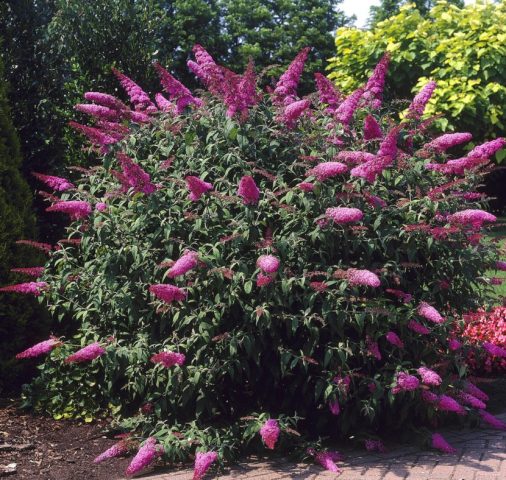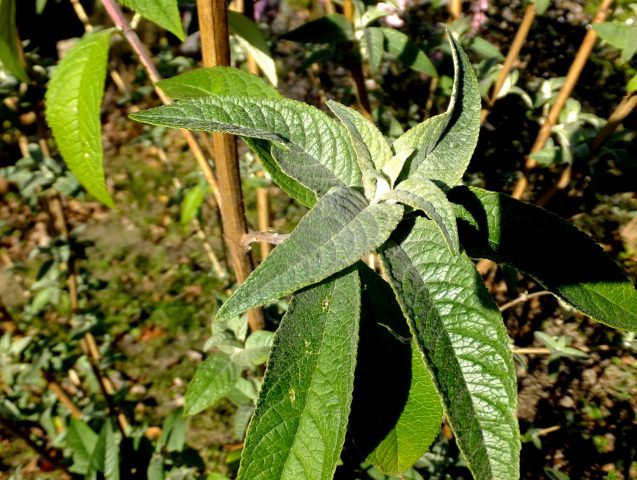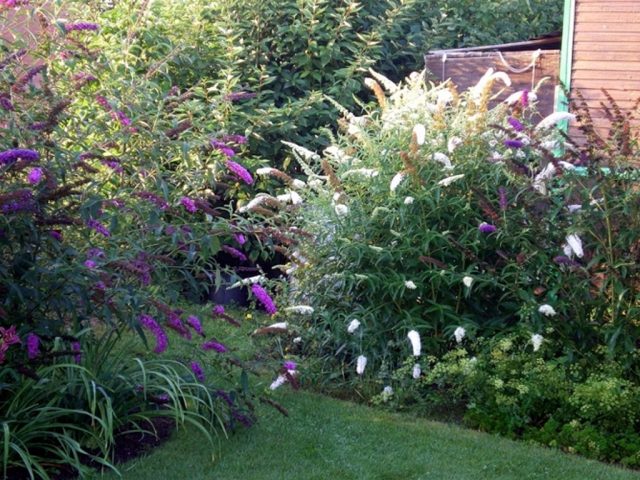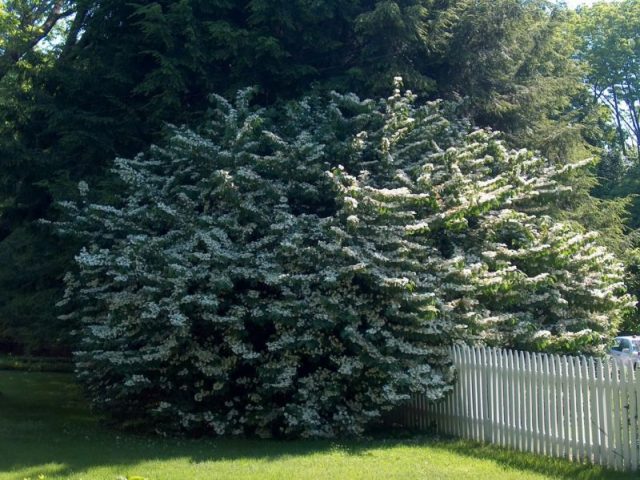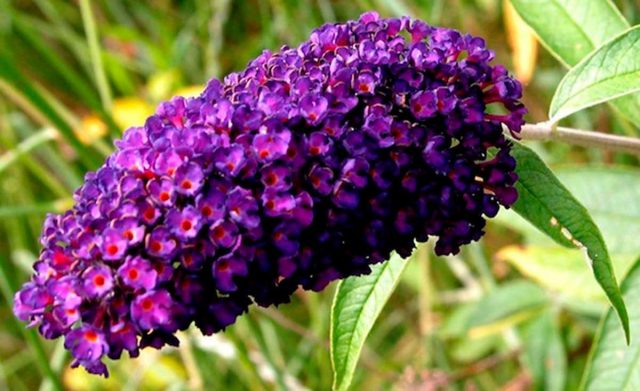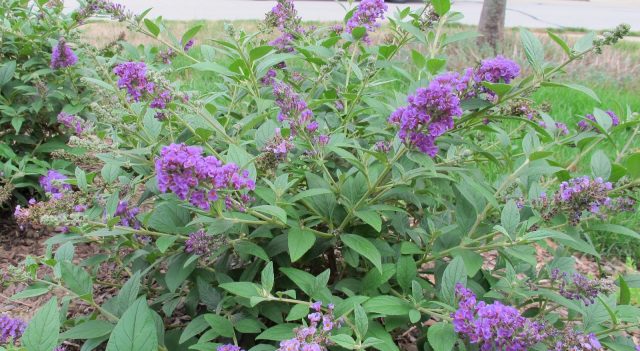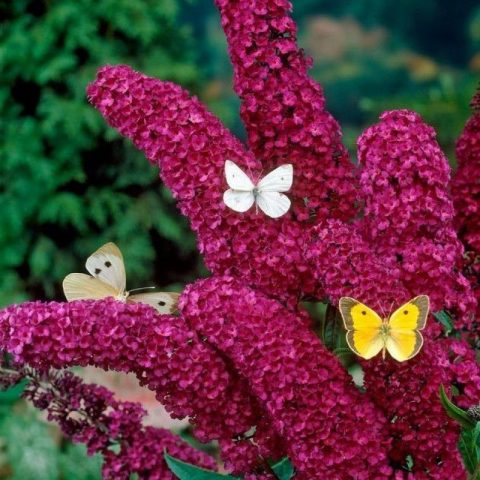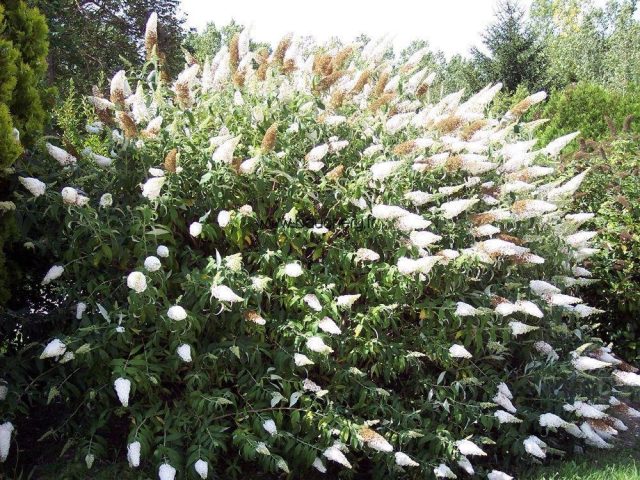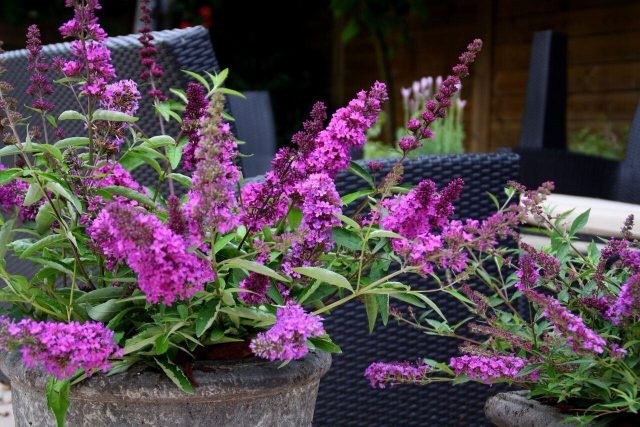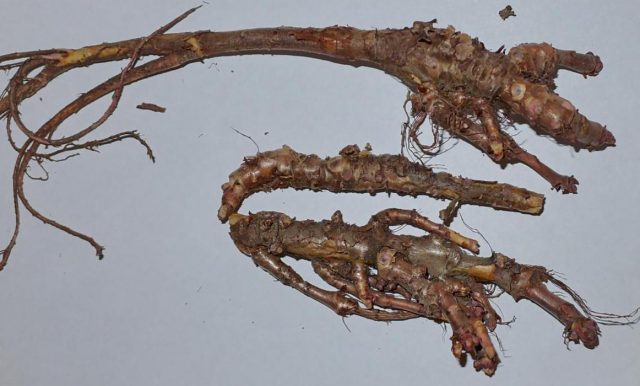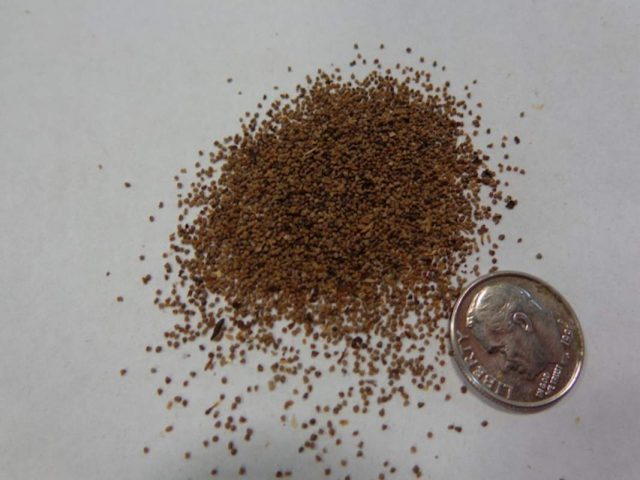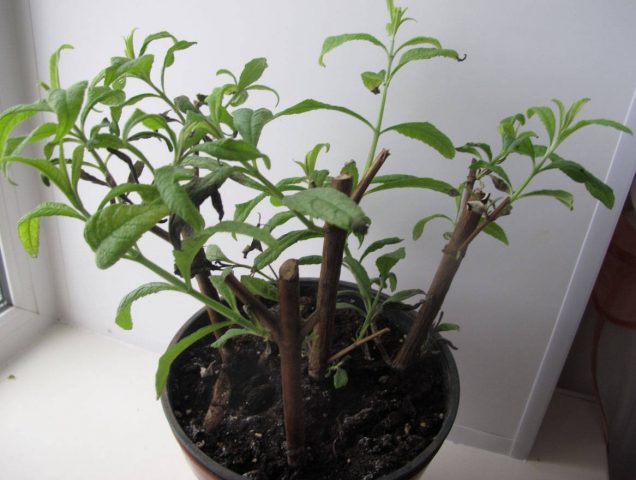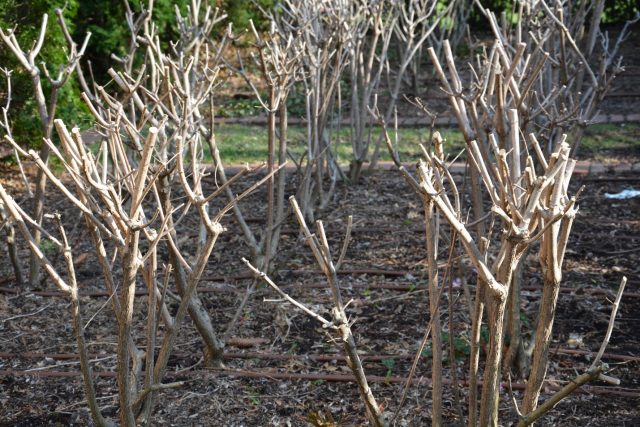Content
Planting and caring for a budley in the open field is a painstaking task that takes time, but as a result, the site is radically transformed. The plant has a pleasant floral aroma, which attracts the attention of butterflies. The shrub got its name thanks to botanists Adam Baddle and Armand David.
The use of budley in landscape design
The homeland of the plant is China, where it is known as an evergreen shrub. In Russia, buddlea sheds foliage when winter frosts come. Outwardly, the plant looks like a tall (up to 3 m) spreading bush, with pointed oval leaf plates. The shrub owes its decorative effect to beautiful inflorescences.
The beauty of a buddleya can be judged from a photo in order to decide on its use in landscape design. The shrub is decorative already in spring: the upper part of the leaf plates of the plant is dark green in color, and the lower part is of a gray, velvety tone.
They use budley both in group and single compositions, focusing on the size of the site and the plan. Often, several varieties of shrubs are combined with different shades.
A plant with habitus or other perennials: representatives of conifers, roses or hydrangeas are harmoniously combined in flower beds.
You can appreciate the shrub of David's buddley from a photo showing the use of a plant for zoning a site, or as a hedge. Designers grow buddley as a kadka culture, placing it on terraces and balconies.
A variety of varieties of Buddley David allows you to choose the best option for your site.
- Flower Power'R: Known among gardeners for its two-tone color. The inflorescences of the variety are very dense, fluffy, in the form of an ear, reaching 40 cm in length. The color of buddley buds is orange-purple. Tall shrub (2-3 m).
- Variety Black knight it has an unusual dark purple color with yellow blotches in the center. The shade of the buddleya is very rich, it stands out favorably against the background of silvery leaves. Shrub 1.5-2 m tall, branches are spreading, slightly drooping.
- Blue chip - This is a compact representative of the buddleya, reaching 45-60 cm in height and 90 cm in diameter. The variety is used for cultivation in containers. The inflorescences of the shrub have a bluish-purple hue, bloom from July to October.
- Royal red differs from other varieties in purple-scarlet flowers, collected in large inflorescences, 25-35 cm long. The buddlei shrub grows up to 3.5 m in height, differs in spreading (2.5-3.5 m).
- White bouquet known as a white-flowered variety. Unlike other representatives of David's buddleia, it has more abundant inflorescences. The panicles of the shrub are spike-shaped, fluffy, up to 20 cm long. White Bouquet grows up to 3 m in height, has lanceolate, dark green leaf plates.The White Profusion buddley variety has a similar color shade and characteristics.
- Popular among compact varieties of buddlei Flutterby, reaching a height of 60 cm. The culture blooms all summer and autumn months before the onset of frost, tolerates low temperatures well (up to -25 ° C). Used buddley for growing in pots. The bushes have gray-blue foliage and lilac inflorescences. The buddleya variety is not seed propagated.
Features of growing buddley
The shrub is capable of blooming for 10 years. A feature of some types of buddleya is the ability to set fruits. They are capsules with numerous seeds.
The nuances of growing a shrub:
- in regions with severe weather conditions, buddlea shoots freeze slightly, but the plant quickly recovers, giving new branches in the summer;
- fast-growing shrub;
- care requirements vary depending on the cultivated variety (amount of watering and dressing, preparation for winter).
The plant produces profuse flower stalks that attract attention with their honey aroma.
When buddleya blooms
The flowering period lasts from July to October and may vary slightly depending on the region where the plant is grown.
The first buddlea flowers can be seen both at 1-2 years of planting and at 3 years of age. It depends on the grooming and planting method. Weakened plants have few buds, they wither quickly.
How buddleya reproduces
The method of growing the shrub depends on the region of residence. In countries with warm climates, it is possible to propagate buddlei varieties by seeds. This is a laborious process that requires preliminary preparation and takes a long time.
The most common and less costly way to propagate buddlei varieties on the site is to harvest apical cuttings. They are obtained by cutting, followed by rooting of the shoots.
How to grow a budley from seeds
How quickly the shrub blooms depends on the quality of the seedlings. When using this method of propagation, flowers can often be seen only for 2-3 years of life.
Growing buddleys from seeds is also possible at home: seedlings are collected independently or purchased in horticultural centers.
What budley seeds look like
The seed material of a plant is like dust, very fine. Often planting buddleys from seeds is difficult: they do not have time to ripen due to a long flowering period.
This leads to a decrease in varietal qualities and poor germination of the material. In regions where summer is short and autumn is cold, purchased seeds are preferred for growing buddlei varieties.
When to plant budley seeds
The timing of sowing seedlings depends on the region of residence. If you have a greenhouse or a heated greenhouse, it is possible to transfer material to the soil in March. In most regions, buddley seeds are planted and cared for in early or mid-April.
It is possible to plant the plant in the greenhouse soil in the first half of March, followed by picking and transferring it to separate holes. This method is relevant only for heated, draft-proof rooms.
Care requirements depend on the proper organization of planting buddley seeds. The first stage of its cultivation is soil preparation.
Best of all, buddlea seeds germinate in neutral and fertile soil. You can make it yourself or buy it in stores.
For the soil mixture, it is necessary to use organic components (sod or leafy soil, humus and peat) and inorganic components (river sand, perlite).
The finished soil is disinfected by one of the methods:
- steaming (the soil is placed in a container with ventilation and spilled with boiling water, laid out in a thin layer on paper to dry);
- calcination (the soil is spread on a baking sheet and placed in an oven for 30 minutes at a temperature of 60 ° C);
- etching: watering the soil with a solution of potassium permanganate or fungicides.
The buddley seed containers should be equipped with ventilation holes. Peat pots, wooden or plastic boxes can be used as containers.
Washable dishes are thoroughly washed and dried; disposable containers do not need pretreatment.
To organize the drainage system, a mixture of sand and humus is spread on the bottom of the container in a ratio of 1: 1.
How to plant budley seeds
Before transferring the seed to the ground, the soil is moistened with warm water. The buddlea seeds are scattered over the surface of the soil and pressed lightly.
Sprouts appear faster if you provide them with the right microclimate. For this, the container with the buddley is covered with cling film or glass, transferred to a well-lit room.
Basic principles of seedling care:
- regular airing of landings;
- timely watering of the plant (for the prevention of diseases, it is recommended to periodically moisten the soil with a solution of potassium permanganate).
After the appearance of the first 2-3 sheets, the film or glass is removed from the containers and, if necessary, the buddley is picked. To do this, carefully transfer the plant to separate peat pots.
Gardeners note that despite the simplicity of planting and caring for buddlea seeds, the culture is growing very slowly. The photo shows the sprouts of the future shrub. The first shoots of buddleya appear 3 weeks after planting.
The hardened plants are transferred to open ground after the establishment of good weather. For this, holes are formed at a distance of 100-120 cm from each other. The depth of the pit for the buddley is not more than 60 cm, a mixture of sand and soil is laid on the bottom as a drainage layer.
Shrub seedlings are transferred into the hole, covered with earth and well moistened with water.
Reproduction of budley green cuttings
At the choice of gardeners, you can buy shrub saplings in the store or prepare cuttings yourself. The procedure is carried out in the spring and summer months, but it must be borne in mind that the rooting process lasts 1-2 months and must be completed before the onset of frost.
Budleia cuttings are the cut off top of annual shoots. They must have at least 3-4 buds. The lower leaf plates and inflorescences of the plant are removed.
Canadian lilac buddleya propagates well by cuttings if rooted correctly:
- the cut before transfer to the soil is renewed and dipped in a growth stimulator;
- soil (mix peat and sand in a ratio of 1: 2) watered abundantly;
- a recess is made in the soil and a cutting is placed in it;
- the container is covered with a plastic bottle or bag.
Buddleya takes root successfully at high temperatures, but direct sunlight should be avoided.
The shrub is transferred to a permanent place after the formation of the root system.
Planting and caring for budlei outdoors
Cultivation of David's buddley is possible in greenhouses, greenhouses or open field. The growth rate of the seedling and its adaptability to environmental conditions depend on the time of planting and subsequent care.
It is recommended to place buddlei varieties away from trees and tall shrubs: the plant has a strong root system that can prevent neighbors from bearing fruit and growing.
When to plant budley in spring
Planting with subsequent care for David's buddle is carried out in the first half of July, when the daytime air temperature slightly differs from the nighttime.
It is allowed to transfer a shrub seedling in early June, but the process requires the organization of frost protection with material or plastic bottles.
Where to plant a budley
The branches of Buddleya continue to develop throughout the summer and autumn, until frosts come, therefore, to prevent their death, a sunny site is chosen. It is necessary to protect plantings from strong winds.
The soil for the shrub must be fertile, moisture-permeable and well-drained. In clay soil, the plant dies quickly or grows poorly. For the enrichment of heavy soil, peat or sand, humus are used.
How to plant
When planting several bushes, it is necessary to mark the site so that there is at least 1-1.5 m between the plants, and if these are tall varieties, then 2-3 m.
Basic principles of planting:
- prepare holes with a depth of 20-30 cm, fill their bottom with humus, add 1 glass of ash;
- transfer the seedling into a pit, sprinkle it with earth.
At the end of the procedure, bumpers of the earth are formed around the budlea and the soil is plentifully watered with warm water.
Growing budley in the garden
After planting the buddleya of David white, it is necessary to organize competent care for the young plant.
He needs timely watering, fertilization and pruning, it is recommended not to neglect the prevention of diseases and pests.
Pruning is necessary for the formation of a shrub: after the procedure, it looks more neat, and in the future it pleases with abundant flowering.
In spring, tall buddleys are cut up to 90 cm from the ground, and undersized varieties up to 30 cm. In summer, fading inflorescences are cut off.
Watering schedule
It is recommended to moisturize young seedlings daily until the root system is strengthened. As the shrub develops, watering is reduced; adult plants are not watered. This is due to the fact that buddleya has very strong roots that can reach groundwater. Provides the necessary amount of moisture to the plant and precipitation.
During periods of drought, 10 liters of warm and settled water are poured under each shrub 1-2 times every 7 days.
Top dressing budley
Fertilizing the soil is required from 2 years of life of the shrub. The procedure is carried out twice a season: in May and July.
The following are used as fertilizers for buddley:
- additives containing minerals (20-25 g are dissolved in 10 liters of water);
- a mixture of mullein (1 liter of manure) and superphosphate (15-20 g): the finished fertilizer is diluted with water and applied to the soil;
- chicken droppings with the addition of potassium sulfate (15-20 g of the substance and 0.5 liters of droppings are mixed in a container).
Do I need to mulch
Loosening the soil around the buddley is impractical: there is a high risk of damage to the root system. To ensure the supply of oxygen to the plant, the soil is mulched. To do this, use the materials at hand: peat, humus or sand, fallen leaves.
When to transplant a budley to another place
Moving the shrub to another area is not recommended. Due to the strong root system, the buddleya does not tolerate a change of residence very well, therefore, as an alternative, a stalk is separated from it, which is transplanted to the desired place.
If it is necessary to transfer, the shrub is removed from the soil, preserving the integrity of the roots as much as possible, placed in a new hole, covered with earth and watered abundantly.
Conclusion
Planting and caring for budley outdoors takes time, but the result is a beautiful ornamental plant. The shrub is perennial, blooming profusely, and is immune to disease. The variety of buddleya varieties allows buddleya to be used in a variety of landscape projects.
